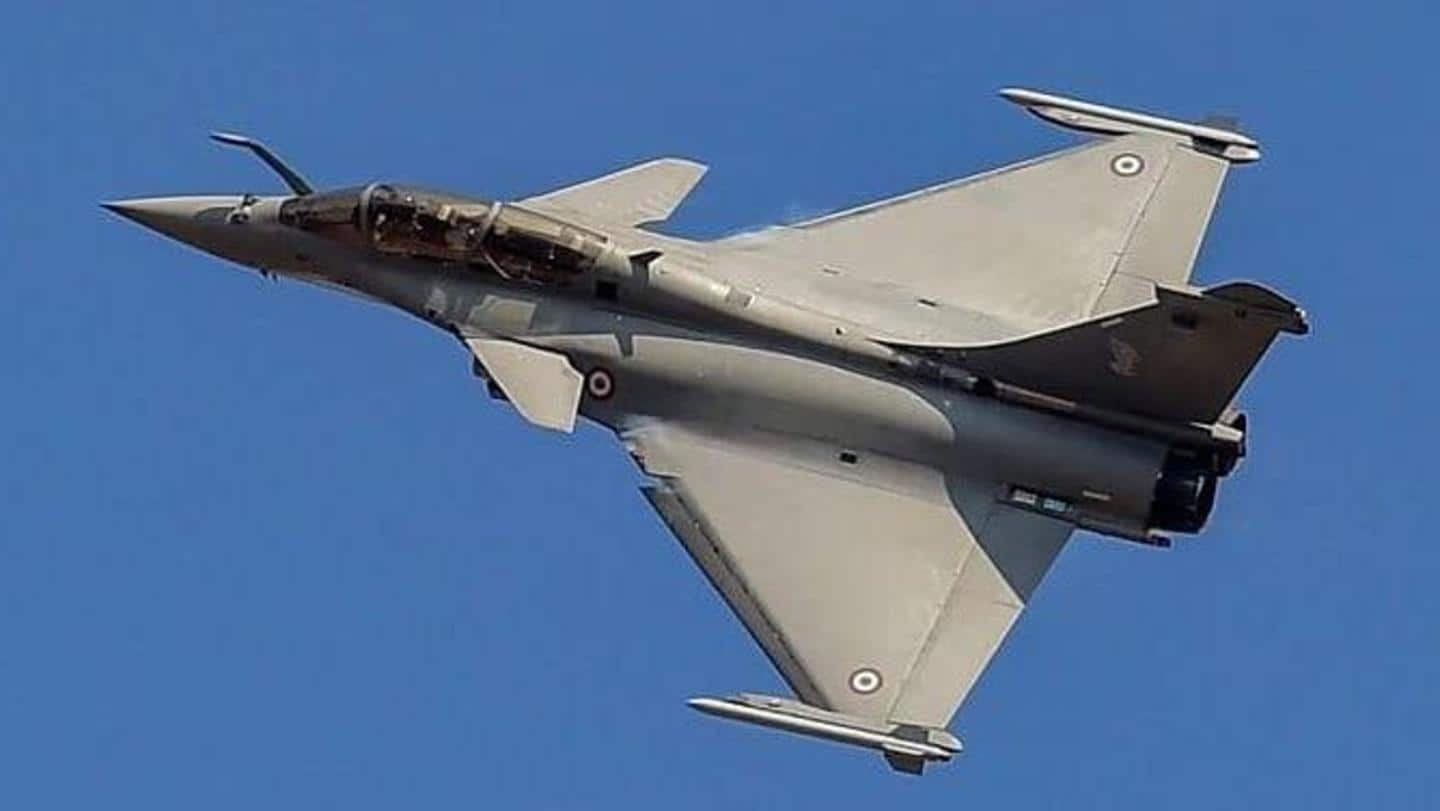
Rafale aircraft makes debut on Republic Day flypast
What's the story
The Rafale fighter aircraft featured for the first time in India's Republic Day flypast as it carried out the Brahmastra formation alone and was part of the Eklavya formation with four other fighter jets.
The jets flew at a height of around 300 meters along with two Jaguar and two MIG-29 aircraft. The five jets resembled a V shape with Rafale leading the pack.
Information
Rafale culminated the flypast by conducting the Brahmastra formation
25,000 strong audience was able to see Rafale again when it culminated the flypast by conducting the Brahmastra formation wherein it traversed at a low altitude for some distance, then pulled up vertically at 90 degrees and conducted rolls before stabilizing at a higher altitude.
Details
Five French-made Rafale jets inducted into Air Force last year
To recall, in a major boost to India's air power capability, five French-made multi-role Rafale jets were inducted into the IAF on September 10, 2020.
A total of 38 IAF aircraft and four planes of the Army participated in the flypast.
As per tradition, the flypast was divided into two blocks: The first along with the parade and the second after the parade.
The flypast
The flypast was divided into several blocks and formations
In the first block, there were three formations. The first was the Nishan formation comprising of four Mi17V5 aircraft that carried the national flag and logos of all three services.
It was followed by the Dhruv formation by four helicopters of the Army Aviation Corps.
The last was the Rudra formation, comprising a single Dakota aircraft flanked by two Mi17V5 helicopters.
Commemoration
Dakota formation celebrated anniversary of India's victory in 1971 war
The Dakota formation celebrated the 50th anniversary of India's victory over Pakistan in the 1971 war that led to the creation of Bangladesh.
Dakotas had played a major role during that war. On December 16 last year, India launched year-long celebrations to commemorate the victory.
The second block of flypast consisted of nine formations, Sudarshan, Rakshak, Bhim, Netra, Garuda, Eklavya, Trinetra, Vijay, and Brahmastra.
Aircraft
Aircraft and helicopters that were part of the formations
Sudarshan formation had one Chinook and two Mi17V5 helicopters, Rakshak comprised one Mi-35 and four Apache helicopters, Bhim formation consisted three C-130J aircraft, and Netra formation comprised indigenously developed aircraft Netra flanked by two Sukhoi Su-30 fighter jets.
Garuda comprised one C-17 Globemaster plane with two MIG-29 and two Su-30 MKI aircraft. Trinetra comprised three Su-30 MKIs.
Vijay formation showcased three advanced light helicopters.
Details
Indian Air Force also showcased indigenously developed aircraft and missiles
Further, the IAF showcased models of Light Combat Aircraft (LCA) Tejas and indigenously developed anti-tank guided missile Dhruvastra on its tableau.
They also showcased scaled-down models of Light Combat Helicopter (LCH) Sukhoi Su-30 MKI fighter jet and Rohini radar on the tableau.
The Sukhoi was displayed with indigenously developed Astra and Brahmos missiles. Indigenously developed Akash missile was displayed along with the Rohini radar.
Details
The marching contingent was led by Flight Lieutenant Tanik Sharma
Indigenously developed next-generation anti-radiation missile Rudram and anti-tank guided missile Dhruvastra were displayed on the LCA and the LCH.
Meanwhile, IAF's marching contingent consisted of four officers and 96 soldiers marching in a box formation of 12 rows and eight columns.
It was led by Flight Lieutenant Tanik Sharma and supernumerary officers Flight Lieutenant Manjeet Singh, Flight Lieutenant Apoorva Yadav, and Flying Officer Kuttapa.